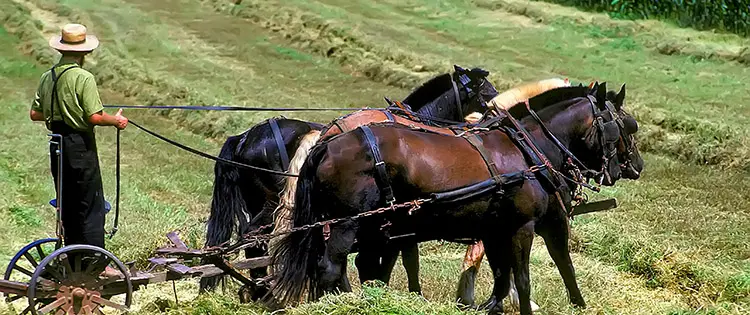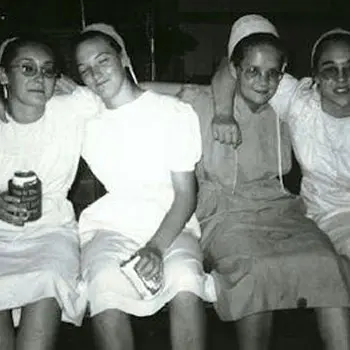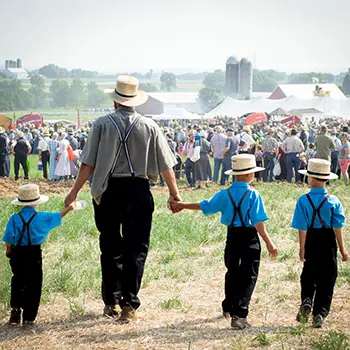If you hail from a rural area, the differences between Amish life and life on your own farm or homestead are a lot less stark.
City folks who have only seen livestock in a petting zoo and have never touched a cow teat with their bare hands are typically in for a far more eye-opening experience.
Wholesome and busy. Those are the first two words that come to mind when describing what you see and feel when spending some time on an Amish farm, no matter where you are from.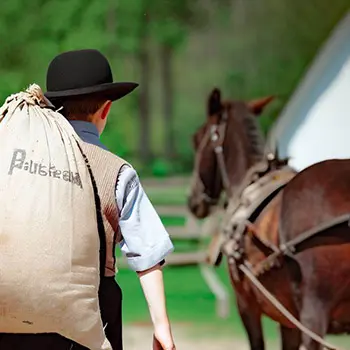
The Amish are surely preppers, survival, and homesteading all-starts. Their way of life avidly wreaks of self-reliance and sustainability. They do not need to watch YouTube videos or read blog posts to learn how to do any of the farm chores they accomplish with vigor each day. Instead, those skills are passed down from generation to generation with hands-on training literally beginning around age two.
Related: Survival Skills You Should Learn From The Amish
A local Amish boy named David was hefting 50-pound bags of horse feed into my truck from his father’s farm business.
He was about 9 at the time and I felt a little bad watching him do all of the heavy lifting. I told him to make sure his dad paid him well for doing such hard work so quickly.
“This is like his college. David should be paying me for teaching him how to run the business,” his dad yelled out from his farm office while chuckling. Yes, the Amish do have a sense of humor.
Technology
The Amish, just like any other group of folks, are not a monolithic community. The “rules” of Amish life when it comes to technology in both simple and advanced forms, are agreed upon by each community and are not a rigid set of rules all Amish in America must follow. The rules can change over time if the community members agree with them.
For example, I once asked Ezra, my Amish farrier, if he knew if the Amish greenhouse in a neighboring village just across our county line was open for the season yet.
“I have no idea. Those are wild Amish, we do not associate with them at all.” Ezra replied.
I was of course curious and simply had to know what constituted “wild Amish.”
Related: Amish Powerless Tools For A World Without Power
By and large, Amish are open to questions about their way of life when asked respectfully and out of genuine curiosity and not judgment.
So I asked.
“They ride bicycles. Even the women,” was Ezra’s response.
Yes, I laughed at his answer. I simply could not help myself. Doing so surely would have been considered ill manners had I not known Ezra for so long and counted him as a friend – and have had him shake his head and laugh at our “modern” responses to various situations, as well.
Energy
Exactly how the Amish power all of their farm work, home building, and various businesses again varies by community. When actively working on the side as a real estate agent, I had the distinct pleasure of venturing inside many an Amish home.
Oh the yummy smells of homemade freshly baked bread and cookies in the old-fashioned oven, still make my mouth water. I am sure they may exist, but I have never met an Amish woman who was not both an excellent cook and baker.
The Amish farms in our county are all powered by wood-burning stoves.
But, in some Amish communities elsewhere in Ohio, solar power is used for home and business power.
Related: Modular Backyard Power Plant Review
When buying a home instead of building it themselves, some Amish leave the electrical outlets, wiring, and plumbing in the walls and simply do not hook up those services. Others completely yank out all of the wiring, receptacles, and plumbing.
The Amish are very savvy businessmen. They know if all of the modern utilities are removed from the home, the resale value drops substantially, so leaving the unused modern conveniences in place is something they are willing to accept.
While horse-drawn farm equipment still reigns supreme in nearly all Amish farms, in some cases gas powered generators and gas-powered equipment is used – in some communities.
That power source is not “tethered” to the land or the Amish home and does not connect them to the modern world in a tangible way, so it may be deemed acceptable.
Rumspringa
The concept of “Rumspringa” is a uniquely Amish tradition.
It is a period of adolescence where Amish youngsters are allowed to leave the community and experience life outside their own.
This period of soul-searching marks a transition from their childhood in the community to adulthood, and it’s up to them to decide whether they want to stay and continue farming or leave for a more “modern” way of life.
This period of self-reflection illustrates the Amish’s embrace of choice and individuality within the boundaries of their community’s traditions and beliefs.
A Woman’s Place…
Living outside of modern society to the most extreme extent possible is perhaps most evidently witnessed when watching the women and girls on an Amish farm.
The men are clearly in charge. That fact is likely obvious to anyone who has heard of Amish life, even if they have never passed a horse-drawn buggy going down the road or ever stepped foot on an Amish farm.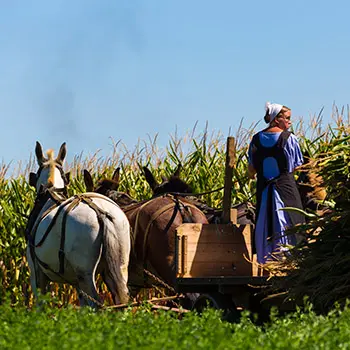
Yet, even though a woman is raised to know that the household and child-rearing responsibilities will fall squarely upon her shoulders – and may feel like a glorified broodmare at some stage in her life, Amish wives are not two-dimensional creatures. Many of the Amish women in my rural community remind me a lot of our homesteading friends and our pioneering ancestors.
An Amish wife will take both great pride and joy in cooking full and hearty meals for her family, tending to the garden, and caring for the children.
But, she is a strong gal and steps up to work alongside her husband and son if a cow gets stuck in the mud, a kid is in distress and needs pulled from its first-time nanny mommy, or any other yucky, dirty, messy, issue that can (and does) pop up on the farm – of the Amish variety of not.
No Pictures Please
Leave your cell phone in the car and just immerse yourself in the Amish farm tour experience. Amish folks as a whole, do not allow their photos to be taken.
You may ask how that worked when marketing that Amish Mafia reality show – that’s a question many Amish folks have shaken their heads in disbelief and asked, as well.
Now, if the image is taken at a distance and does not show distinct facial features, some Amish communities will allow images to be taken on their farm or at their business.
When I have needed some photos of an Amish farm for various writing projects or when marketing a farm tour for their community, I ask in advance and take photos from behind – like some adorable Amish children playing on a farm gate or my farrier working on my horse’s hooves.
That type of photo-taking is usually, but not always, acceptable. Good manners can go a long way when wanting some keepsake images from your Amish farm visit.
Education
Amish children are educated in a pioneer era or old-fashioned homeschool-type manner. While their formal academic education ends around age 13, the children are typically quite literate, excellent at math (making money is a high priority in the Amish community) and have an in-depth understanding of their faith and culture.
I was treated to a tour of the local Amish one-room schoolhouse. It was neat and orderly (just like an Amish home), included a religious-based curriculum created by Amish for Amish, and even included a classroom pet – a cockatiel.
I told the children I had parrots. They knew what parrots were but had never seen one. The adult trained by the community to teach the children gave me permission to show them a video of my parrots bobbing their heads and dancing to jazz music. The children were enthralled, both by the colorful parrots and the fact they were watching them in a device I was holding in my hand.
When even an Amish child makes a change for you at their farm or store, rest assured the amount will be accurate – without the need of ever using a calculator. In my experience, the Amish poppa would be highly displeased if the till was even a few cents off at the end of the day.
Amish Work Ethic
The work ethic of the Amish folks I have experienced on their farms and at their businesses is truly a timeless lesson in productivity and community. Growing up in such a modern century, it’s become easy to forget what hard work really means.
The advent of technology and modern conveniences has made our lives much easier compared to previous generations. But after spending time on an Amish farm during a recent visit, it hit me that something powerful lies beneath the surface of the deliberate, seemingly simplistic work practiced by these people.
The Amish believe that work is central to a meaningful life, a belief that is deeply rooted in their faith. It’s no surprise then that their strong work ethic permeates every aspect of their lives.
From the clothes they wear to the food they eat, everything is produced through a rigorous and disciplined work process that is a stark contrast to the “fast-food” approach in mainstream society. 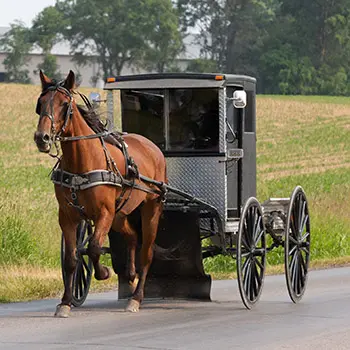
On the farm, I observed a range of labor-intensive activities, including fieldwork with horses, harvesting crops, and milking cows by hand.
The Amish also manufacture their own furniture and build their own homes using traditional techniques passed down from one generation to the next.
Related: Natural Remedies From The Amish
But you don’t need to belong to an Amish community in order to achieve self-sufficiency or start living independently. There is a guide called No-Grid Survival Projects, specifically created for this purpose, which I highly recommend.
One thing that stood out for me was how the farm worked as a unit; everybody was assigned a task, and they worked together to accomplish their goals. There was no sense of hierarchy or competition, but rather a shared sense of responsibility and ownership of the work they were doing.
This community-first approach to work is something that has gone missing in our modern-day workplaces, where individualistic goals and career advancement have taken precedence over the collective good.
The Amish work ethic is so deeply ingrained in their community that even as society progresses, it remains largely unchanged. One key takeaway is the value placed on craftsmanship and mastery, which contrasts sharply with the “throwaway culture” that defines much of our consumer-driven society where people are content to buy and throw away new products without thought.
The Amish’s sustainable approach to farming, using traditional techniques that have been passed down for centuries, is a testament to their commitment to low-impact and high-quality living.
Ultimately, the Amish way of life offers a new perspective on work and what it means to be a part of a community. Although it’s certainly not feasible for everyone to adopt their lifestyle, studying the Amish work ethic can provide valuable insights for better understanding productivity in the modern era.
Related: Cut Down On Your Bills In 2024 With These Amish Projects
There’s no denying the impact of technology on our lives, but as the Amish have shown, there’s something to be said for valuing hard work, craftsmanship, and community as much as productivity and profits.
I believe my most important takeaway from visiting an Amish farm and getting to know the folks who comprise their community locally is not all of the major differences between our lifestyles, but the beautiful similarities.
The shared love of working the land, taking care of the family, wrangling animals, and harvesting from the garden, are all major facets of life in both Amish and homesteading/prepper families.
Try not to stereotype the Amish into a label that pigeonholes them or makes them the modern-day equivalent of a traveling circus sideshow. Look past the plain and chaste clothing of the Amish and their aversion to cell phones, the internet, etc., and really see the people.
When I took my three young grandchildren with me to the farrier recently, they noticed none of the things I have noted as major cultural differences in this article. Instead, they just saw new friends to play in the dirt, puppies to cuddle in a shed behind the barn, and sweet fresh out of the oven chocolate chip cookies to snack upon in their not-so-clean hands.
This article first appeared here.
How The Pioneers Could Predict The Weather
This Is How To Keep Your Family Safe During A Long-Term Blackout (Video)
Dutch Oven Recipes Cowboys Survived On

